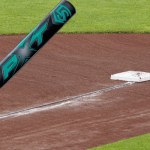*Note: products listed on Bases Loaded Softball are selected by our softball players, coaches, and team of enthusiast writers and editors. Buying softball products through our links may earn us a commission with no additional cost to you.
Defensive plays can make all the difference in a softball game. To master these plays, it is crucial to have a solid understanding of the obstruction rule. Obstruction occurs when a defensive player hinders or impedes the progress of a baserunner. This guide will break down the key techniques for making the perfect defensive play and shed light on the consequences of obstruction.
Mastering Defensive Plays in Softball
When it comes to defensive plays in softball, there are several techniques that can greatly improve your skills on the field. The first key technique is positioning yourself properly. In order to make a play, you need to be in the right place at the right time. This means anticipating where the ball will be hit and adjusting your position accordingly.
Another essential technique is maintaining good footwork. Quick and precise footwork can make all the difference in reaching a ball or making a throw in time. It is important to stay light on your feet and be ready to react at a moment’s notice.
Additionally, communication is crucial in defensive plays. Effective communication between teammates can prevent confusion and ensure that everyone is on the same page. Clear and concise verbal and non-verbal signals can help coordinate defensive movements and prevent errors.
Consequences of Obstruction
Obstruction is a violation of the rules that can have significant consequences in a softball game. When a defensive player obstructs a baserunner, the runner is awarded the next base, and any other runners are also advanced if forced. This can result in runs being scored and have a major impact on the outcome of the game.
In addition to the immediate consequences, obstruction can also result in disciplinary action. Umpires may issue warnings or ejections to players who persistently obstruct baserunners. It is important for players to understand the rules and avoid obstructing the progress of opposing players to maintain fair play and sportsmanship.
back to menu ↑Obstruction Hotspots on the Field
Obstruction can occur in various areas on the softball field. By identifying these hotspots, players can anticipate potential obstruction scenarios and be better prepared to defend against them.
Common Areas Where Obstruction Occurs
One common area where obstruction often occurs is around the bases. When a runner is attempting to advance from one base to another, the defensive player positioned near the base may try to impede their progress, leading to obstruction. This can happen during stolen base attempts or when a runner is rounding the bases for a potential score.
Another hotspot for obstruction is at home plate. Catchers, in an effort to prevent a runner from scoring, may obstruct the plate with their body or equipment. This can lead to controversial calls and heated discussions between coaches, umpires, and players.
Here is a solid example of a pretty serious home plate obstruction call where the catcher blocked the runner from scoring (and most likely injured her as well) in a college softball game:
back to menu ↑Difference Between Obstruction and Interference
While obstruction and interference are related, they are not interchangeable terms. It is important for players, coaches, and umpires to understand the nuances of these two concepts.
Unraveling Controversial Calls in Softball
Interference refers to any illegal action by an offensive player that hinders a defensive player’s ability to make a play. This can include actions such as running inside the baseline, intentionally obstructing a fielder, or interfering with a catcher’s ability to make a play. Interference is typically called when the offensive player’s actions directly hinder the defensive player’s ability to field, throw, or catch the ball.
On the other hand, obstruction is the act of a defensive player hindering or impeding the progress of a baserunner. Unlike interference, obstruction is typically called when the offensive player’s actions do not directly hinder the defensive player, but rather when the defensive player initiates the contact that hinders the runner.
The Double-Play Interference Call
A specific instance where the difference between obstruction and interference comes into play is the double-play situation. In softball, there are specific rules and interpretations regarding contact between a baserunner and a fielder during a double-play attempt.
If a baserunner intentionally initiates contact with a fielder in an attempt to break up a double play, interference is called. However, if the fielder obstructs the baserunner’s path without having possession of the ball or attempting to complete the play, obstruction is called. This distinction can have a significant impact on the outcome of the play and potential scoring opportunities for the offensive team.
Navigating Fielding Challenges: Fly Balls and Ground Balls
In the game of softball, fielders face different challenges when it comes to defending against fly balls and ground balls. Understanding the rules surrounding obstruction in these scenarios is essential for both defensive and offensive players.
When a fielder is attempting to catch a fly ball, obstruction can occur if a defensive player intentionally obstructs the path of the baserunner who is attempting to tag up and advance after the catch. Proper positioning and awareness of baserunner’s paths can help prevent obstruction calls in these situations.
Similarly, obstruction can occur on ground balls if a fielder deliberately obstructs the path of a baserunner trying to reach the next base. It is crucial for fielders to remain within the boundaries of fair play and avoid obstructing baserunners in their attempt to make a play.
Coaches and Obstruction: A Fine Line to Walk
Coaches play a crucial role in teaching players the strategies and tactics of the game, including defensive plays and obstruction. However, they must also be mindful of their actions and interactions with officials.
While it is essential for coaches to advocate for their players and seek clarification on calls, it is important to approach discussions with a respectful and sportsmanlike demeanor. Unnecessary argumentation or confrontations can lead to further penalties or disciplinary actions against the team.
back to menu ↑Obstruction Variations in ASA and USSSA Softball
Softball is governed by different organizations, each with their own set of rules and regulations. Understanding the obstruction rules specific to the organizations you play under is crucial for both players and coaches.
Understanding the Rulebook: ASA and Obstruction
The Amateur Softball Association (ASA) has specific rules in place to govern obstruction. It is important for players and coaches participating in ASA-sanctioned games to familiarize themselves with these rules to ensure fair play and avoid penalties.
One key rule in ASA softball is that obstruction must be intentional or deliberate. Accidental contact or unintentional obstruction is generally not called in ASA games. This distinction emphasizes the intent behind the defensive player’s actions and ensures that calls are made based on deliberate obstruction rather than incidental contact.
USSSA Obstruction Rules: What You Need to Know
The United States Specialty Sports Association (USSSA) has its own obstruction rules that differ slightly from those of ASA. Knowing the specific rules of USSSA can help players and coaches navigate potential obstruction situations during USSSA-sanctioned games.
One key difference in USSSA softball is that obstruction does not have to be intentional or deliberate. Even accidental contact or unintentional obstruction can be called as obstruction in USSSA games. This stricter interpretation ensures that even minimal hindrance to the baserunner’s progress is recognized and penalized.
back to menu ↑Base Blocking in Softball
Base blocking is a defensive strategy employed by catchers and fielders to prevent baserunners from advancing. However, there are rules and guidelines that dictate when and how base blocking can be executed.
Recent Updates to Collegiate Rules on Base Blocking
In collegiate softball, the rules regarding base blocking have undergone recent updates to prioritize player safety and minimize potential collisions. These updates have clarified what is considered legal base blocking and what actions cross the line into obstruction.
Collegiate players and coaches must familiarize themselves with these rule changes to ensure compliance and avoid penalties. This includes understanding the positioning and movement restrictions imposed on defensive players during base blocking.
When blocking the base and obstructing the baserunner, defensive players must still provide a clear and unobstructed path for the runner to reach the base. Failure to do so can result in obstruction calls and disciplinary actions against the defensive team.
When and How to Properly Block the Plate
Blocking the plate is a specific form of base blocking used by catchers to prevent runners from scoring. However, catchers must do so within the framework of the rules to avoid obstruction calls.
When blocking the plate, catchers must have possession of the ball or be in the act of catching a thrown ball. Additionally, catchers must maintain a clear lane for the runner to slide or attempt to reach home plate safely. Any intentional obstruction without possession of the ball can result in obstruction calls and the runner being awarded home plate.
back to menu ↑Conclusion
Understanding the obstruction rule is essential for players and coaches looking to master defensive plays in softball. By employing the techniques discussed in this article, athletes can enhance their defensive skills and avoid obstruction penalties. Additionally, being aware of the nuances between obstruction and interference, as well as the specific rules of respective governing bodies such as ASA and USSSA, will help players navigate potential obstruction scenarios confidently.
Furthermore, being mindful of the legality of base blocking and staying up-to-date with any rule changes, particularly at the collegiate level, will ensure players and coaches stay compliant and avoid unnecessary penalties. By cultivating a comprehensive understanding of obstruction and its implications, players can significantly enhance their defensive performance and contribute to their team’s success on the softball field.
Image Credit: “GL010672” by Gene Lafferty is licensed under CC BY 2.0








